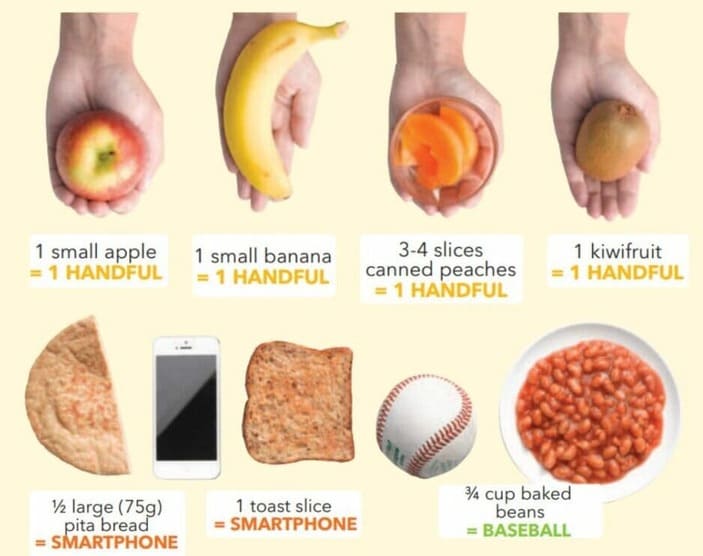Understanding Portion Sizes: A Complete Guide for Parents
As parents, we often wonder: “How much food should my child be eating?” Understanding and mastering portion sizes is a crucial and a proactive step for your child’s health and development. This guide will help you navigate the complex world of portion sizes and teach your children healthy eating habits that will last a lifetime.

Why Portion Sizes Matter
Portion control is not merely about limiting food; it is a science-driven practice that ensures children receive adequate nutrients without overconsumption. Proper portion sizes are essential because:
- They ensure balanced nutrient intake: Delivering the requisite macronutrients and micronutrients vital for growth, cognitive function, and immune system development.
- They prevent overconsumption and mitigate obesity risk: Addressing the escalating global concern of childhood obesity by regulating energy intake.
- They facilitate healthy weight maintenance: Establishing a foundational equilibrium between energy consumed and energy expended.
- They cultivate intrinsic hunger and satiety recognition: Empowering children to respond to their body’s natural physiological cues, thereby promoting intuitive eating.
- They establish enduring healthy eating patterns: Laying the groundwork for responsible dietary choices throughout adolescence and adulthood.
Let’s explore how to implement appropriate portion sizes for your children.
Age-Appropriate Portion Sizes
Children’s nutritional needs evolve with growth and development. Understanding your child’s nutritional needs at different ages is key. Here’s a general guide:
Toddlers (1-3 years)
- Grains: 3-5 servings (1/4 to 1/2 cup per serving)
- Vegetables: 1-1.5 cups
- Fruits: 1-1.5 cups
- Protein: 60 - 120 gms (2-4 ounces)
- Dairy: 2 cups
Preschoolers (4-5 years)
- Grains: 4-6 servings (1/2 to 1 cup per serving)
- Vegetables: 1.5-2.5 cups
- Fruits: 1.5-2.5 cups
- Protein: 85.05-141.75 grams (3-5 ounces)
- Dairy: 2.5 cups
School-Age Children (6-12 years)
- Grains: 6-8 servings (1 cup per serving)
- Vegetables: 2.5-3 cups
- Fruits: 1.5-2 cups
- Protein: 120 - 150 grams (4-5.5 ounces)
- Dairy: 3 cups
Visual Guides for Serving Sizes
Using visual references can make portion sizes easier to understand:
- A serving of meat should be about the size of a deck of cards
- A serving of cheese should be about the size of four dice
- A serving of pasta should be about the size of a tennis ball
- A serving of vegetables should be about the size of a baseball
- A serving of fruit should be about the size of a tennis ball
Pragmatic Strategies for Portion Control Implementation
Effective integration of proper portion sizes into daily routines can be achieved through these practical measures:
Utilize smaller dinnerware: Employing child-sized plates and bowls can visually regulate food quantities. Serve food in the kitchen: Dispensing individual portions from the kitchen rather than offering family-style serving discourages automatic second helpings. Pre-portion snacks: Dividing snacks into individual, small containers helps manage consumption between meals. Employ measuring tools: Consistent use of measuring cups and spoons during food preparation and serving ensures accuracy. Guide self-serving: Empowering children to serve themselves under supervision fosters an understanding of appropriate quantities.
Cultivating Mindful Eating and Preventing Overconsumption
To foster a healthy relationship with food and prevent overeating, implement the following strategies:
Promote slow and deliberate eating: Encourage children to savor their food and allow time for satiety signals to register. Educate on hunger and fullness cues: Teach children to distinguish between genuine hunger and mere desire, and to stop eating when comfortably full. Avoid using food as a reward or solace: Disassociate food from emotional responses to prevent maladaptive eating behaviors. Refrain from enforcing “clean plate” rules: Allow children to leave food when they are satisfied, respecting their internal hunger and fullness signals. Create a positive dining environment: Foster a calm and enjoyable atmosphere during mealtimes, free from distractions and pressure.
Engaging Children in Portion Size Education
Transforming the learning process into an enjoyable experience can significantly enhance understanding and compliance:
Utilize colorful measuring tools: Make measuring fun with brightly colored cups and spoons. Incorporate portion size games: Develop interactive games that reinforce portion concepts. Involve children in meal preparation: Allow them to assist in measuring ingredients, thereby gaining hands-on experience. Employ food models and visual aids: Use tangible representations or pictures to demonstrate appropriate serving sizes. Collaborate on portion size charts: Create personalized visual guides with your child to reinforce learning.
Common Portion Size Mistakes
Awareness of prevalent mistakes can aid in their avoidance:
Oversized dinnerware: Plates that are too large can inadvertently encourage larger portions. Restaurant portion distortions: Be mindful of the often excessive serving sizes offered in commercial establishments. Unrestricted snack access: Allowing continuous grazing can lead to excessive caloric intake. Unchecked second helpings: Encouraging additional servings without assessing genuine hunger can lead to overeating. Distracted eating: Consuming food while engaged in other activities (e.g., screen time) can hinder mindful eating and lead to overconsumption.
Portion Size Tools and Resources
Use these tools to help with portion control:
- Measuring cups and spoons
- Food scales
- Portion control plates
- Visual guides and charts
- Smartphone apps for tracking
Special Considerations
Consider these factors when determining portions:
- Activity level
- Growth spurts
- Medical conditions
- Food preferences
- Cultural considerations
Conclusion
Understanding and implementing proper portion sizes is a crucial part of raising healthy eaters. By using visual guides, age-appropriate portions, and teaching mindful eating habits, you can help your children develop a healthy relationship with food. Remember, the goal is to teach children to listen to their bodies and make healthy choices naturally.
Start implementing these portion size guidelines today, and watch your children develop healthy eating habits that will benefit them throughout their lives. As a parent, you have the power to shape your child’s relationship with food in a positive way.
Further Reading: The Science of Play: Fundamental to Your Child’s Development





